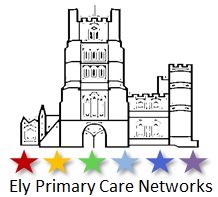

A 6-month pilot at Staploe Medical Centre (part of Ely North and South PCN) has shown:
- Better patient engagement
- High opt-in rates: >72% achieved
- High adherence: 77% completion of protocols
- Greater confidence: 90% of patients felt able to take their BP at home
- High patient satisfaction: 91% felt Florence helped them track and report their BP; 73% preferred sharing their BP readings through Florence
- Improved clinical outcomes
- 36% of hypertension diagnoses through Florence (68% likely)
- 75% of BP readings submitted were normal / low
- Time & Money Saved
- 13 minutes of administrative time saved per patient
- 15 minutes of clinical time saved per patient
- £5.85 saved per patient
Better Patient Engagement
Since June 2023, Florence has been raising awareness of the importance of blood pressure monitoring, boosting patient confidence and developing a strong platform for significantly improved long-term clinical outcomes.
Opt-in rates rose to 72% in the second half of the pilot as a “more considered and clearly communicated approach to engaging patients” was taken, however Florence’s initial bulk action was recognized as having led to the increase in the overall requests for BP checks.
Patient satisfaction was high: 90% felt able to use the system, 91% felt Florence helped them track and report their blood pressure, with 73% preferring Florence to texting or in-clinic readings.
Patient adherence was impressive, with 77% of active patients completing a protocol, resulting in greater confidence in self-management, with 90% of patients feeling able to take their BP at home. Those with prior knowledge of blood pressure monitoring embraced the system reflected in high completion rates in follow up home BP monitoring, with a particularly impressive 80% completion rate in patients over 80 illustrating the accessibility of Florence for all age groups.
Improved Clinical Outcomes
36% of hypertension diagnoses were made by Florence with a further 32% or 50 diagnoses likely to be attributable, according to the lead GP, suggesting up to 68% of diagnoses made during that 6-month period.
Moreover, Florence identified patients within normotensive levels, highlighting Florence also as an effective preventative screening tool. 86% of returned BP readings were normal or low, enabling clinicians to efficiently risk stratify patients and concentrate on those needing further BP optimisation.
Clinicians positively highlighted their ability to intervene earlier than with other measures enabling them to more efficiently diagnose and / or titrate patients further improving patient outcomes. “If they’ve missed it for a few days, you can then go in and give them a phone call or whatever and just say have you got a problem? Are you OK? So, you can intervene at an earlier stage.”
The foundations laid by the pilot for longer-term improvements in clinical outcomes are evident: faster optimization of BP medication, reduced CVD development and complications, reduced presentation in secondary care, and prevention of CVD. Florence encourages positive behavioral change in patients; and according to one clinician. “It gives them a little more control over their own health because it’s not just bringing them back constantly, they’re doing it for themselves.”
Over 1,000 hours saved
A basic cost-benefit analysis showed savings in admin and clinical staff time of 13 and 15 minutes per patient compared to paper-diary based BP monitoring totaling £5.85 per patient via Florence automatically calculating average BP, uploading results, and supporting patients through the process. With Staploe’s projected 2,200 patients in the first year of implementation that translates into 1,027 hours saved.
This does not consider the time and money saved by patients not having to travel to clinic nor the longer-term benefits of automation, improved clinical outcomes with reduced risk of future complications, and reduced appointments. Future staff time will be saved from not having to create and book appointments or protocols such as annual reviews.
“That frees up the GP a bit more and it frees us up a bit more because then if they can do this on a regular basis, then it’s saving appointments as well.”
Lessons Learned & Implemented
Strong foundations have been laid, and adaptations made to overcome perceived barriers to patient engagement have proved very effective. Resources for patients and staff have resulted in a strong buy-in across the practice with greater knowledge and understanding resulting in improved communication to patients and an acceptance of the technology. Yet again, Florence has demonstrated it “provides a strong platform …to successfully engage patients in a meaningful way…and provides an opportunity to focus on engaging patients that are on currently on more capacity draining pathways.”
For further details see www.generatedhealth.com or contact:
US: ebender@generatedhealth.com
UK: kylie.dentith@generatedhealth.com
Australia: john.griffiths@generatedhealth.com